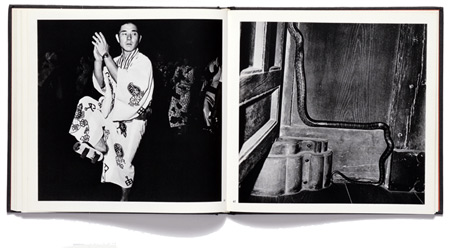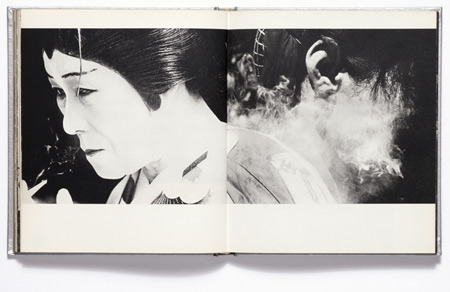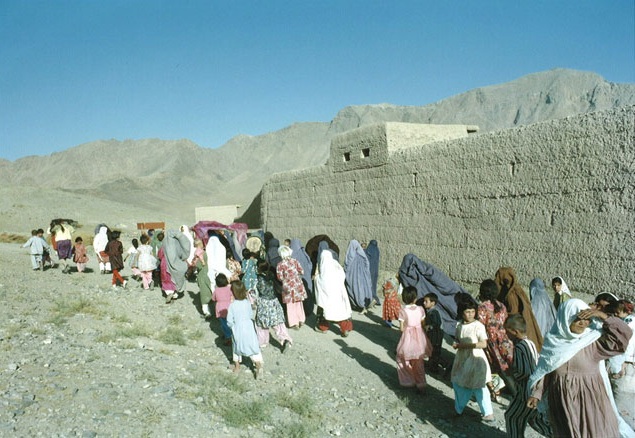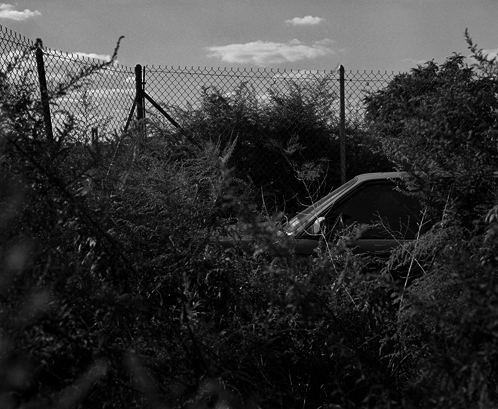
I first met Hiroh Kikai in 2007 after discovering his portraits taken over several decades in Askausa, Tokyo, in his stunning book Persona. A collection of these photographs entitled Asakusa Portraits has since been published by Steidl. On a trip to Japan in May 2008, I managed to sit down with Kikai for an interview in Shibuya, Tokyo. The interview was conducted in Japanese and the following extract from the interview is a translation.
Marc Feustel: You have had an atypical experience as a photographer. For many years you had to juggle photography with earning a living. Do you think this had a significant impact on your approach to photography and the subjects that you chose to photograph?
Hiroh Kikai: Well, in the beginning I did not intend to pursue a creative career, let alone a career in photography. For me photography was simply a more attractive hobby than literature or painting. But as it turned out, I had some talent, and after having photographed for some time, I began to really enjoy myself. Photography was not only enjoyable, but it was also absolutely modern. Everyone could participate, it was magical! And it has to be said that this new form of expression fascinated people: photographers had a halo of prestige and conveyed an image of strength.
In addition to being at the cutting edge of technology, photography was the most expressive medium of communication: everyone wanted to become a photographer. I began to photograph not because I thought I could make a living from it, but because I was irresistibly drawn to the medium. Also I did not see myself working for a photographic publication. You have to remember that at the time editors paid their staff a pittance while expecting a colossal amount of work from them. On little more than 300,000 Yen for a monthly salary, you could not expect to go very far. I decided to follow my own path, and kept away from these circles. You know what they say: little by little, a bird builds its own nest. I was determined to not waste my talent and for me, joining one of these photography publications would have been the best way to waste my time and energy: I prefer to be free to do as I choose. So I started off by taking several manual labour jobs: truck driver, dock worker… and I was able to survive on half of my salary.
I was aware of the fact that I lacked photographic experience. I was still immersed in my philosophy studies at the time, and I began to think about the following concept: the essential thing was not the camera but the act of looking. You had to look again and again until you could feel the essence of everything that was around you. The concept was good, but I needed some way of putting it into practice. At first I thought about taking a job on a tuna fishing boat. The sea seemed like it would be photogenic. This was the 1970s, conceptual art was the trend, and even if there was no specific subject, any old picture could suddenly be held up as a work of genius. I quickly understood that this was a bit lightweight as an artistic approach. But beyond any of this, it seemed important to me to have a change of scenery and to see new things if I wanted to evolve. I decided to take the tuna fishing job and I got on board.
MF: Your biography states that you “had a happy childhood, from the age of 11 or so preferring to play alone in the nature that surrounded the village”. When I look at your career it seems that you have continued along this path as a photographer.
HK: It is true that I am a bit of a loose cannon amongst contemporary photographers and I have always preferred working alone. People may think this is driven by nostalgia or by misanthropy: in our society people that choose to work in this way are often the victims of prejudice. It is therefore a difficult way of life, but I think it can be a hugely valuable one. I feel that today we devote more and more time and energy to superficial things. I am referring to the way that people live, particularly in contemporary Japan: saturated with information, with an ever-growing list of things that we need and do not have. All of this acts like a screen, blocking out the true nature of things from our atrophied gaze. In what sense are we still living fully? I wonder, amidst this profound confusion, how we can know what is real and what is fake? What is it that will make us judge someone as superior?
I don’t think it is nostalgia, but it is true that I have felt, and continue to feel, that there is something lacking, a metaphysical void in our society and what it should be aiming for. When I took photographs in India, I did not want to convey some eternal vision of “Mother India”, but simply the way of life of some people that I met over there; for me these photographs radiate intensity because they show a way of life devoid of all artifice, a way of life concerned with the fundamental things. I felt the same thing in Turkey.

MF: You have said that “Writing is a task that [you]’ve never enjoyed”. This surprised me as your captions seem to be very important components of your Asakusa portraits.
Philosophy begins with the art of using words and language. At least, this is what my professor taught me, so therefore I am familiar with the act of writing, or at least of articulating ideas in an intelligible fashion. However the idea of writing has always more or less paralysed me. With this kind of complex, I would never have expected to be able to come out with anything at all, but against all odds, I wrote the texts for my books India and Gassan. I suppose that being immersed in the world of my childhood must have inspired me.
To answer your question, these captions and these photographs are exactly the same thing. At least, they come from the same approach. For me they are intrinsically linked and both create an intense expressiveness. Photography and writing are part of the same battle for me: both involve making something intelligible which is not necessarily so. Both of them formalise an obvious fact that is not always visible, acing like a magnifying glass or, if you prefer a musical metaphor, transposing the ordinary from a minor to a major key. In the case of this process of transformation and formalisation, even that which we considered as trivial or unimportant becomes vital and likely to encourage reflection. When one constantly questions reality, and that is what a photographer does, one becomes aware that everything is linked: immobility and movement, positive and negative, the important and the futile… these apparently opposite notions in fact complete each other, in a process that is brought out by the act of capturing an image. Writing is based on the same principle, as are all forms of expression that in a general sense attempt to capture reality and to transcend its chaos. One then becomes aware of the link that exists between objects and concepts that everything seems to oppose but which in fact only exist because their opposite does. My approach as a photographer is based on these considerations; if there is something that I have learned from all of those years as a student of philosophy, it is this.
MF: You have spoken about the role of time in your photographs. For me all of your photographs have a very peculiar sense of time, even those that bear the hallmarks of modern society such as your Tokyo Labyrinth series: it is hard to say whether we are looking at the past, the present, the future or some mixture of the three.
HK: Of course I aim for the formal aspect of my work to capture reality as closely as possible, which means that I aspire to a resolutely modern—but all-encompassing—form, in the sense that it takes account of both the past and the present. I do not think particularly of capturing the “present moment” or the “essence of the Japanese soul” when I take my photographs. What outweighs all of these considerations is the act of photographing the human. Indeed, when I am shooting in Asakusa, I don't think about any of this at all. If Asakusa was suddenly swept away, I would just be a man in the cosmos photographing other men in the cosmos… in truth I attach very little importance to topography. Once again I prefer to adopt an all-encompassing vision: the place where I am located is simply an extension of my own roof and I am here for one thing only: to create. Of course, if we limit ourselves to a strictly formal point of view, New York for example is an ideal backdrop for street photography, but form cannot replace substance. If I do not have a person that emanates some kind of life force or experience in front of my lens, the alchemy will not work and in the end all that will remain is a slick image with no soul. Topographic considerations are for architectural photography. Finally, as for the choice of Asakusa, once again, it is not the place that matters (in fact I started shooting there because it was not far from my home), it is the people. It is not the fact that these people are Japanese but the fact that their face and their body tells a story, whether they are Japanese, French, English or martian… the most important thing is that when I arrive I can say to myself “Ah, there are lots of people today, I should be able to find something good.”

MF: There is undeniably a very universal quality to your work. What does the idea of being a “Japanese photographer” mean to you? Do you consider yourself as a Japanese photographer with the cultural heritage that that entails or do you consider yourself simply as a photographer?
HK: To be completely honest with you, I must admit that I never look at the work of other photographers. I am always concerned that I will be destabilised by the fact that some of them are much better than I am. If a photographer cannot look at this work objectively, then he is not a true photographer. A photographer must constantly put himself into perspective because photography is not an innate language. It is not because I spend 24 hours running through the streets looking for photogenic models to pose for my camera that I will get good results.
I remember a time when Andrzej Wajda came to my studio to see some of my photographs. He asked me: “Are these people all Japanese?”, and then would say “they almost look like Westerners here!”. But for me, they were first and foremost human beings. And if he saw a resemblance between Japanese and Polish people, and more generally Europeans, it is because today, beyond our respective grievances, stories and wounds, globalisation—and the homogenisation of our societies that it leads to—means that we all fundamentally have the same conditions of existence. For this reason, when I shoot a portrait it is of no interest to me to say that this person is in a certain location. Perhaps my approach is wrong. Perhaps some people need this kind of information to appreciate a photograph and to be able to relate to this stranger suspended on this glossy paper. What can I say to this? Nothing really. Particularly given that it is this process of relating that makes a good photograph. On one hand we have the image, on the other the viewer. If the viewer relates to the image, feels integrated into what he is looking at, then a dialogue is established between the 2 parties and, in some way, the photographer is also taking part in this silent conversation. This is the case for the photographs that I took in India as well as my portraits taken in Asakusa. For a split second, the photographer recedes into the background and becomes a pure silhouette, in perfect osmosis with his subject. The gaze of the viewer comes afterwards, and determines decisively the beauty and the success of a photograph. If there is interaction then the image works. It is alive. You can observe the same thing in theatre. I should add that this notion of “seeing” is far less obvious than it seems. Looking is within everyone’s grasp. Seeing is difficult. There is a difference between being passively stuffed with images, as is the case today, and being active in the process of apprehending an image. We look with our eyes, our heart and our reason. Seeing, truly seeing, is all of these things.

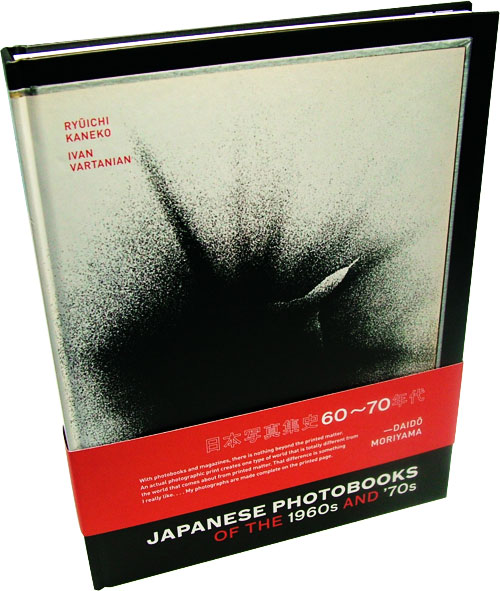 Ivan Vartanian and Ryuichi Kaneko's Japanese photobooks of the 1960s and '70s belongs to a new breed of photobook: the book on books. Martin Parr and Gerry Badger's two-volume history of the photobook is probably the best known of these, but there are other interesting examples. Jeff Ladd's Errata Editions is taking this one step further with the 'Books on Books' series which each focus on a single photobook in order to make rare and out-of-print books accessible to us mere mortals.
Ivan Vartanian and Ryuichi Kaneko's Japanese photobooks of the 1960s and '70s belongs to a new breed of photobook: the book on books. Martin Parr and Gerry Badger's two-volume history of the photobook is probably the best known of these, but there are other interesting examples. Jeff Ladd's Errata Editions is taking this one step further with the 'Books on Books' series which each focus on a single photobook in order to make rare and out-of-print books accessible to us mere mortals.